As one might expect, moving to France required me to learn a few things. First of all, I’ve had to learn to speak French – which I don’t do all that well. However, I’ve also had to learn about hundreds of stinky cheeses. My French speaking may need some work, but I do speak “fromage” very well… & let’s face it – here in France, that might actually be more important.
* * *
1 – Bleu d’Auvergne
Bleu d’Auvergne is produced in the Massif Central between Puy-de-Dôme and Cantal. A cheese producer back in 1854 found some mold on his bread & thought to himself, “Hey, I bet this shit would be great if I mixed it with some cheese.” Kind of like the chocolate & peanut butter guy, but with mold instead of chocolate & cheese instead of peanut butter.
2 – Cantal
Cantal is hard to semi-hard cheese from the Cantal region of France. It’s one of the oldest cheeses in France & since I’m not able to find Cheddar cheese here, I’ve found that Cantal cheese is actually pretty good on a taco.
3 – Comté
Comté is another very old cheese & comes from the Jura region. Evidently, it is forbidden to sell any grated cheese under the Comté name. No problem. I bring it home, grate it… & put it on a taco.
4 – Reblochon
The name “Reblochon” actually comes from the verb “reblocher”, which as I’m sure you all know means “to pinch a cow’s udder again”. If that doesn’t make you want to try it, then we’re not even speaking the same language.
5 – Roquefort
The legend (yes, there is a legend) of Roquefort cheese goes like this: some horny teenager was eating some bread & sheep cheese. In the distance, he spotted some hot chick & naturally decided to chase after her. Like most teenagers, he stashed his lunch in a cave for later. When he came back, delicious mold had grown all over his cheese, which is good for the rest of us, because that moldy cave cheese is pretty freaking good.
6 – Saint Nectaire
Saint Nectaire (pronounced san-neck taire) is another cheese from the Auvergne region of central France. It has a strong smell a little like a damp cellar filled with hay. A yummy delicious damp cellar filled with hay.
7 – Camembert
In 1791, a cheese producer in Normandy named Marie Harel was given the “secret” of Camembert production by a priest. Years later, a painter named Salvador Dali was outside on a hot day with a half-eaten lump of Camembert cheese melting in the sun. The runny, stinky cheese gave him the idea to paint melting clocks. “The Persistance of Memory” is Dali’s most famous painting. If you squint, it kind of looks like a melting clock.
8 – Tomme de Savoie
This one comes from the Savoie valley in the French Alps & actually, doesn’t have an overwhelming funk or a profoundly strong taste. It simply is. But, um… maybe you don’t want to put it on a taco.
9 – Ossau Iraty
Ossau in the valley of Bearn and Iraty in the forests of the Pays Basque combine to make this cheese. It’s another one that doesn’t have a powerful odor or taste, but that isn’t the best part. The best part is that if you’re lactose intolerant, this one is safe to eat without having to take any of those fucking Lactaid pills. How awesome is that?
10 – Rocamadour
Goat cheese is awesome. It’s one of my favorites. Well, if it’s like this one – dry & smelling kind of like old, warm milk. You know, as opposed to the runny goat cheeses with the rind of hairy blue mold.
11 – Munster au Cumin
First of all, it’s “Munster”, not “monster”. Ok, I’m glad we’ve had that little talk. Monks back in the 12th century created Munster since they weren’t allowed to eat any meat. Bummer. It’s got a rather strong taste, but the cumin balances it out & creates an added deliciousness. However, the smell is pungent… especially after leaving in the fridge for about a week.
12 – Raclette
This one actually originated in Switzerland, but is now produced in France & even in the U.S. Most of the time, it’s melted with fire or a special Raclette grill. Then the melted cheese is scraped onto your plate (racler meaning “to scrape”) usually to be eaten with potatoes, prosciutto & pickles. A little like eating Fondue. You know, because of the melted cheese & Switzerland… see the connection?
13 – Fourme d’Ambert
Fourme is another one of those delicious moldy cave cheeses. The legend (yes, another cheese legend) says that Fourme d’Ambert was already being eaten during the time of the Gauls & the Druids. It’s actually rather creamy & isn’t as strong or smelly as it may look. Eating something with spores on it only sounds gross… really, it isn’t. Penecillin spores are actually quite tasty.
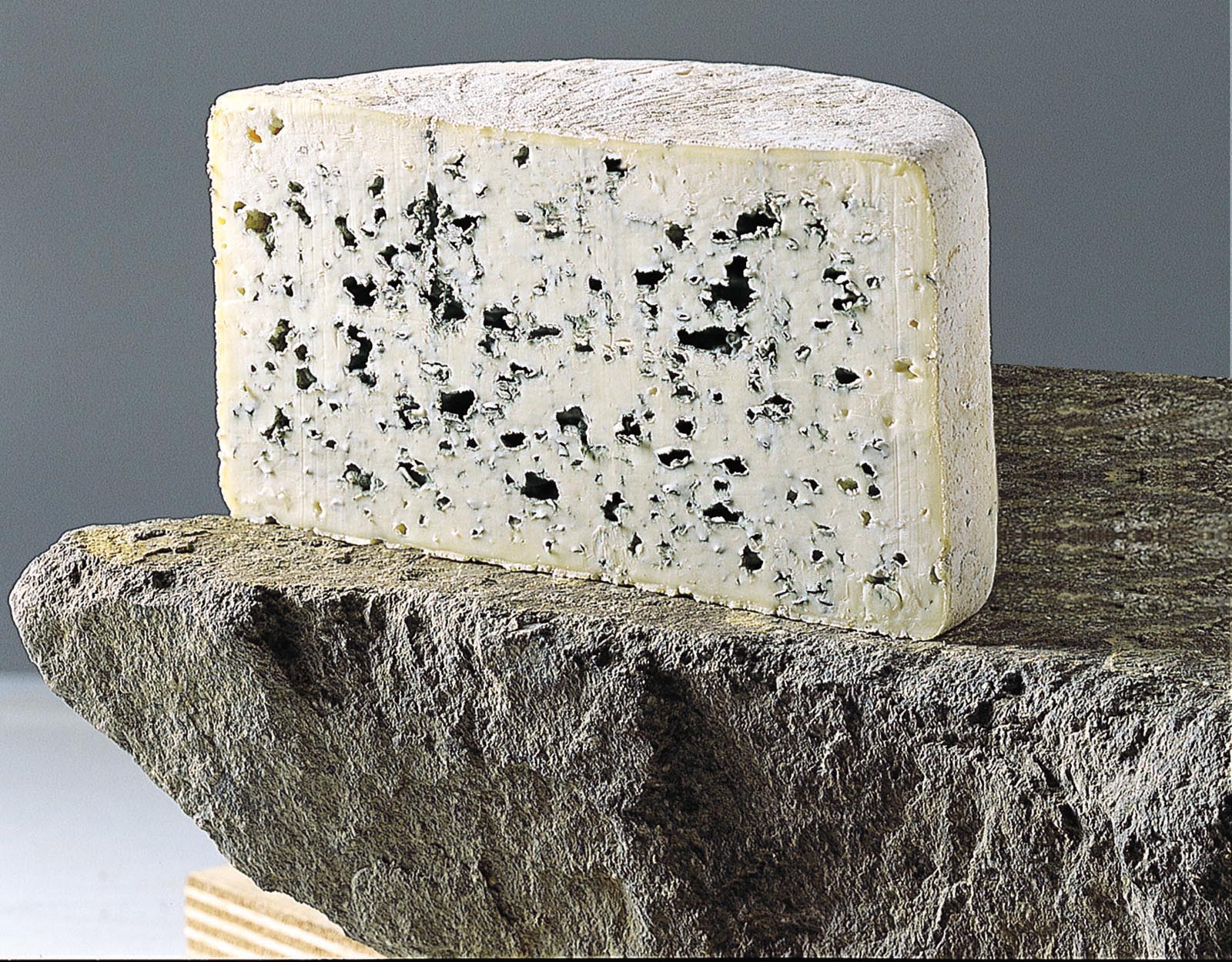
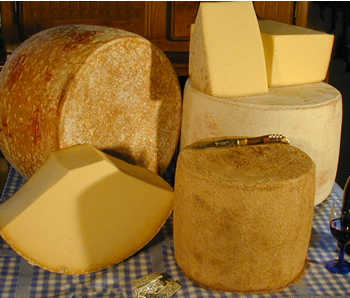
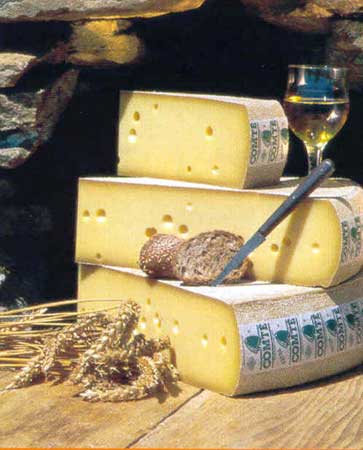
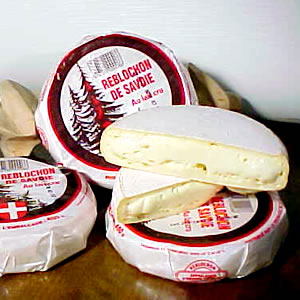
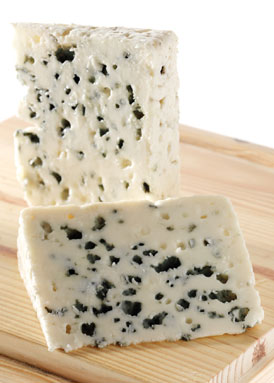
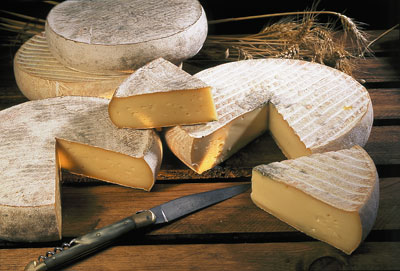
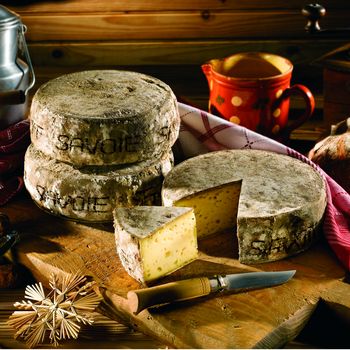
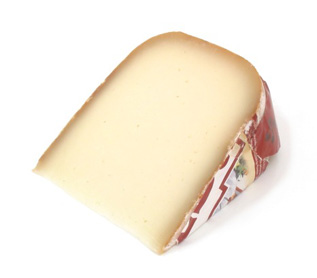
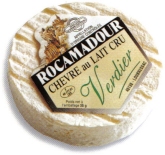
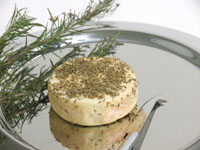
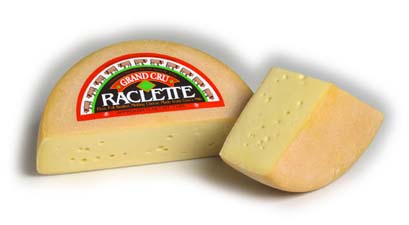
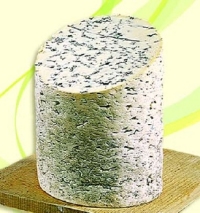
I am freaking drooling. Yummy. Too bad it’s midnight and I live like 30-something miles from the nearest place that might have some camembert if I’m lucky… if it were open… poor me. Most times I don’t mind living in BFE. This isn’t one of them. Hahaha! Great TT!
I’m up at both Thornesworld
and with my very first TT at my new blog, Eclectic Witch!
I hope you’ll stop by!
I think I have tasted most, if not all of those. Delicious, all of them! When I worked in France I learned that cheese should be served at room temperature, not chilled and solid from the fridge, with most of the flavour chilled out of it. Cheddar, and variations thereof, are all very nice, but the French do cheese best of all.
And you’ve taught me a new word! If I ever find myself in France on my own, I shall use it when attempting a seduction: “Oh, cherie, comme j’ai envie de te reblocher!”
Oh man, one of the things I miss most about living in Europe is the access to good cheese. I’ve tried every one of the cheeses on this list and while I’m partial to the non-mouldy sort, I’d still go for any of them right about now.
Camembert all the way! I bet it tastes wonderful in France. Happy TT! 🙂
Yummy !! I love them all the more it stinks the better it is. You can also add the stinky Italian once, they are good too, lol !
I’ve never noticed a STRONG odour with camembert… I find it much like brie in that sense… but roquefort has DEFINITE moments and rather bad memories for me because of it’s aroma!!!
Your definition of “reblocher” totally made me giggle 😉
And omg, that cheese, that wonderful delicious cheese! I LOVE France!
I love cheeses but I have to admit I haven’t tried many if any on your list. I must broaden my horizons! Happy TT
J’adore fromage.
Wow, I still remember some high school french…
Great TT
Wow! I am hungry! What a great list and with pictures too. Happy TT!
I feel a bit like Wallace – ‘CHEESE’ gosh, we’re off cheese right now, but …. sigh… what a list!
I love the post. Love the photos. Love cheese. Love you.
But what the fuck is TT?
I love cheese, but I prefer Dutch (hard) cheese anytime; the older the better. Might be because I’m Dutch! 😉
Thanks for visiting my TT.
I love me some cheese!!! I haven’t tried all of them, I better correct that error!!!!
Great list…Had Horseradish Chedder today! I would love to try some of these!
Why do I want a taco?
[…] Rasmenia » Blog Archive » 13 Stinky French Cheeses […]
[…] That was about 2 1/2 years ago. Since then, I’ve become an expert at fusion cooking. It started with a taco salad. No sour cream to go on top. Instead, I had to use crème fraîche. Since I had no grated Cheddar or Monterey Jack cheese, I had to use Cantal. […]